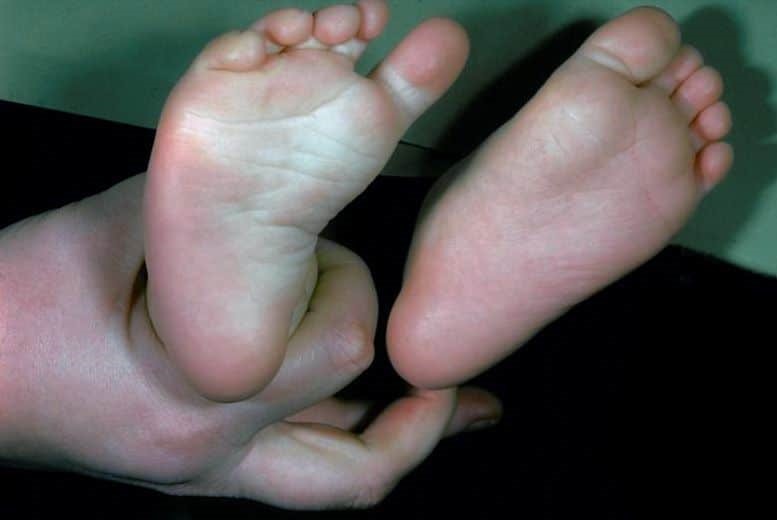
Foot deformities: metatarsus adductus or metatarsus varus
Present as early as birth, metatarsus adductus is an alteration of the front part of the foot. The bones are tilted inward and give the foot a characteristic C-shape
Metatarsus adductus is the least severe form of congenital clubfoot
It occurs equally in males and females and affects both feet in half of the cases.
It affects approximately 1-2 infants per thousand.
The alteration mainly affects the metatarsals (i.e., the bones in the middle part of the foot), which are exaggeratedly tilted inward (adducted).
As a result, the front (front) part of the foot is bent inward.
In 2-4% of cases, and especially in girls, it may be associated with congenital hip dysplasia and therefore ultrasound screening is appropriate.
The cause of metatarsus adductus is unknown
However, a familiarity of the disease is common and may be present in parents or siblings.
The deformity is present at birth; the front of the foot is bent inward (adducted) but not downward or with the ankle turned inward as is the case in congenital clubfoot.
The little foot is curved in a C shape with the prominence (convexity) toward the outside and concavity toward the inside, with a characteristic crease (groove) in the middle part.
The big toe is more or less separated from the second toe and faces inward.
When left untreated, the metatarsus adductus gives the child a characteristic inward-facing toe gait
This condition can be identified as early as during pregnancy during morphologic ultrasound.
It is confirmed soon after birth with the orthopedic examination: the forefoot, i.e., the front part of the foot, is adducted, the outer part protruding more due to the greater inclination of the last metatarsal (the fifth).
In some cases, the abnormalities can be better clarified by radiographic examination of the feet.
Skeletal abnormalities and their stiffness define the degree of deformity, allowing more or less severe forms to be distinguished.
In milder forms of metatarsus adductus-the vast majority-the foot is flexible and the deformity is easily corrected manually.
These forms tend to heal spontaneously during growth, without the need for therapy or the use of braces.
In some cases, correction can be accelerated on the recommendation of the specialist by the parents themselves through gentle manipulations, performed several times a day by gently grasping the calcaneus with one hand and exerting pressure on the forefoot to correct adduction.
For intermediate forms, specific braces can be applied (Bebax)
For more severe cases of metatarsus adductus, i.e., with a rigid deformity that is poorly correctable manually, the application of a femoro-podal (i.e., extended from the foot to the root of the thigh) flexed-knee cast may be appropriate, shaped to achieve progressive correction over several weeks (usually 3-4).
Very rarely, surgical treatment is necessary.
Once corrected, the adducted metatarsal does not recur.
Read Also
Emergency Live Even More…Live: Download The New Free App Of Your Newspaper For IOS And Android
Pain In The Sole Of The Foot: It Could Be Metatarsalgia
Orthopaedics: What Is Hammer Toe?
Hollow Foot: What It Is And How To Recognise It
Occupational (And Non-Occupational) Diseases: Shock Waves For The Treatment Of Plantar Fasciitis
Flat Feet In Children: How To Recognise Them And What To Do About It
Swollen Feet, A Trivial Symptom? No, And Here’s What Serious Diseases They May Be Associated With
Diabetic Foot: Symptoms, Treatment And Prevention


